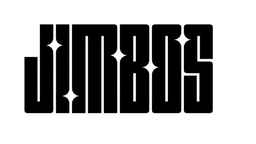Cut & Finish Pad vs Foam Pad: What’s Better for One-Step Polishing?
Foam pads have been the go-to for years, but cut & finish pads are quickly becoming the smarter option for detailers looking to save time and get results. Let’s compare both and see which one’s right for your next job.
Traditional Foam Pads: Pros & Cons
Foam polishing pads come in a range of cuts—from aggressive to ultra-soft finishing. While they’re effective, they often require multiple steps (cut, polish, finish) to get the job done right.
- ✅ Easy to control
- ✅ Good for soft clear coat finishes
- ❌ Often require multiple pad changes
- ❌ Slower correction time on moderate defects
Cut & Finish Pads: Where They Win
Instead of switching between a cutting pad and a finishing pad, a good cut & finish pad lets you do both in a single pass—especially when paired with a polish like Picture Perfect Polish.
- ✅ Strong enough to correct swirls and haze
- ✅ Soft enough to finish clean—even on black paint
- ✅ Perfect for one-step polishing jobs
- ✅ Reduces product waste and pad swapping
Side-by-Side Comparison
| Feature | Traditional Foam Pad | Cut & Finish Pad |
|---|---|---|
| Correction Ability | Depends on foam type | High for a one-step |
| Finishing Ability | Excellent (with finishing foam) | Excellent (when technique is dialed) |
| Pad Changes Needed | Usually 2–3 per job | 1 pad for full correction + finish |
| Time Efficiency | Slower (multi-step) | Faster (single step) |
When to Use Each Pad
Use foam pads: when doing multi-step paint correction on ultra-hard clear or when you're chasing perfection on show cars.
Use a cut & finish pad: when you want one-step speed with pro-level results. Ideal for daily drivers, dealership work, or production detailing.
Pro Tip
Pairing a cut & finish pad with a polish that adapts—like Picture Perfect Polish—unlocks even better results. The pad and polish work together to give you consistent cut and clarity without haze or extra steps.
Related Posts
Frequently Asked Questions
Can I replace all my foam pads with cut & finish pads?
You can for most jobs—but you may still want specialized pads for heavy compound work or ultra-soft finishing in rare cases.
Is there a learning curve with cut & finish pads?
Not really. If you’re used to foam pads, the transition is quick—just adjust your polish and technique as needed.
Will it haze on black paint?
No—when paired with the right polish and dialed-in machine speed, it finishes down clean and clear.
Does it work better on DA or rotary?
It works well on both. On DA machines, it delivers safe, controlled correction. On rotary, it can finish surprisingly well with light pressure and polish control.



